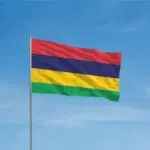Daylight Savings Ends every first Sunday in November, on November 2 this year, in most parts of the U.S. and marks the transition to standard time. It is the day Americans set their clocks back one hour before bed on Saturday night to end daylight saving at 2 A.M. The return to Standard Time means the sun will rise earlier and you can enjoy the rays of the morning when you wake up early!
History of Daylight Savings Ends
The first Sunday in November is when Daylight Saving Time ends in most areas in the U.S., and it marks the ‘fall back’ to standard time. The practice of Daylight Saving Time (DST) or ‘summertime’ advances clocks by one hour during the summer months so it gets dark at a later time. Typical DST is implemented by setting a clock forward by one hour in the spring — spring forward — and setting it back by one hour in autumn — fall back — to return to standard time. This causes the loss of an hour for one day in the late winter or early spring but brings more warmth from the daylight in summer evenings. Daylight Saving Time has lasted eight months a year since 2007 when the U.S. Congress declared that it must begin on the second Sunday in March and end on the first Sunday in November in the United States.
Although Benjamin Franklin, in his quote: “Early to bed and early to rise makes a man healthy, wealthy, and wise,” which was published in a letter in the ‘Journal de Paris,’ was the first to suggest the full use of daylight, he never mentioned setting clocks backward or forward. It was the New Zealander George Hudson who invented the modern idea of daylight saving in 1895 when he presented a paper to the Wellington Philosophical Society.
While most of the U.S. states practice daylight savings as standardized by the Uniform Time Act of 1966, states like Arizona and Hawaii don’t. The law grants individual states the right to determine whether or not to observe DST.
Daylight Savings Ends timeline
Benjamin Franklin writes, "Early to bed and early to rise makes a man healthy, wealthy, and wise," in a letter published in the ‘Journal de Paris’ during his time as an American envoy to France, and it is considered the first instance of the idea behind Daylight Saving Time.
A New Zealand entomologist, George Hudson, invents the modern concept of daylight saving time by shifting the time two hours ahead in October and two hours back in March, to give more hours of sunshine to go bug hunting after work in the summer.
A British builder called William Willett suggests that clocks should be set 20 minutes forward every Sunday in April and 20 minutes back every Sunday in September, eight annual time shifts in total.
All clocks are set forward by one hour, in parts of the German Empire, to save the power used for lighting to fuel the war, with other countries — Belgium, Denmark, France, Italy, Luxembourg, Netherlands, Norway, Portugal, Sweden, Turkey, Tasmania, Nova Scotia, Manitoba, Great Britain, Australia, and Newfoundland — following this practice, but everyone returns to standard time after the war.
The United States observes daylight saving time for the very first time after a bill introduces the concept of time shifts occurring every season, but the bill is repealed seven months later.
President F. D. Roosevelt introduces the concept again when the Second World War begins, and Daylight Saving Time (renamed ‘War Time’) lasts from February 1942 to September 1945.
The Uniform Time Act is passed to standardize time zones and daylight saving practices around the United States.
To save energy after the 1973 oil embargo, the United States Congress legislates a year-long daylight saving time from January 1974 to April 1975, but the plan fails, and in October 1974, the U.S. reverts to standard time.
Daylight Saving Time is extended to begin in March and end in November instead of April and October.
Daylight Savings Ends FAQs
Will we get rid of daylight saving?
It depends on the state. The Uniform Time Act of 1966 grants state legislatures the right to revoke DST practice.
Will Canada get rid of Daylight Saving Time?
Last year, the Ontario government passed a bill ending the time shifts each mid-year, making standard time permanent in the province. The neighboring jurisdictions must all agree for the law to be official.
What is the point of daylight saving?
Daylight Saving Time helps people and countries make better use of daylight.
What was the original reason for Daylight Saving Time?
Daylight saving time has long been seen as a measure for saving energy.
Why is Daylight Saving Time bad?
Changing to Daylight Saving Time is linked to some health issues like cardiovascular morbidity, a higher risk of having a heart attack or stroke, irregular heartbeats, and appears to cause brain damage.
How to Observe the End of Daylight Saving Time
Watch the sunrise
The return of Standard Time means the sun will rise a little earlier. You’ll enjoy the morning rays as you prepare for breakfast if you get out of bed early.
Take a longer night rest
The return to standard time also means you gain an hour back from midday to sleep longer! Use it. Enjoy the comfy-ness of your bed and the privilege of a ‘longer’ night.
Share on social media
Share your experience transitioning back from daylight savings time to standard time on social media! Did you oversleep? Missed an appointment? Use #DaylightSavingTimeEnds or #FallBack to share with the world.
5 Important Facts About Daylight Saving Time
It was unpopular at first
The first Daylight Saving Time that was observed during the first world war was so unpopular because people typically rose and went to bed earlier than we do today, that the U.S. Congress had to override President Wilson’s veto to repeal it.
Different countries, different Daylight Saving Times
Global daylight saving schedules differ by country and region, like in Western Europe, Daylight Saving Time begins from the last Sunday of March at 1 A.M. to 1 A.M. GMT on the last Sunday of October.
Freedom of choice led to confusion
There was no federal law regulating Daylight Saving Time between 1945 and 1966, so states were free to choose to observe it or not and when it started and ended, which caused national confusion particularly with the media and transport companies who had to announce conflicting schedules every so often.
Countries near the equator don’t observe DST
At least 40 countries worldwide observe Daylight Saving Time, but most countries near the earth’s equator don’t deviate from standard time.
There is no ‘s’ after ‘Saving’
Contrary to the popular saying, the correct term is ‘Daylight Saving Time’ not ‘Daylight Savings Time’ which translates to a time for saving daylight!
Why the End of Daylight Saving Time is Important
The warmth of summer lasts longer
Daylight saving causes us to lose an hour for one day but allows people to get up earlier in the morning and experience more daylight in the evening during the summer months.
We become more timewise
Yes! Daylight saving helps us to see the importance of making full use of every hour of the day during standard time months when we typically get fewer things done.
More after-hour fun
Here’s the fun part. Since there’s an extra hour of daylight during the DST months, after working hours typically feels like an extended party!
Daylight Savings Ends dates
| Year | Date | Day |
|---|---|---|
| 2024 | November 3 | Sunday |
| 2025 | November 2 | Sunday |
| 2026 | November 1 | Sunday |























